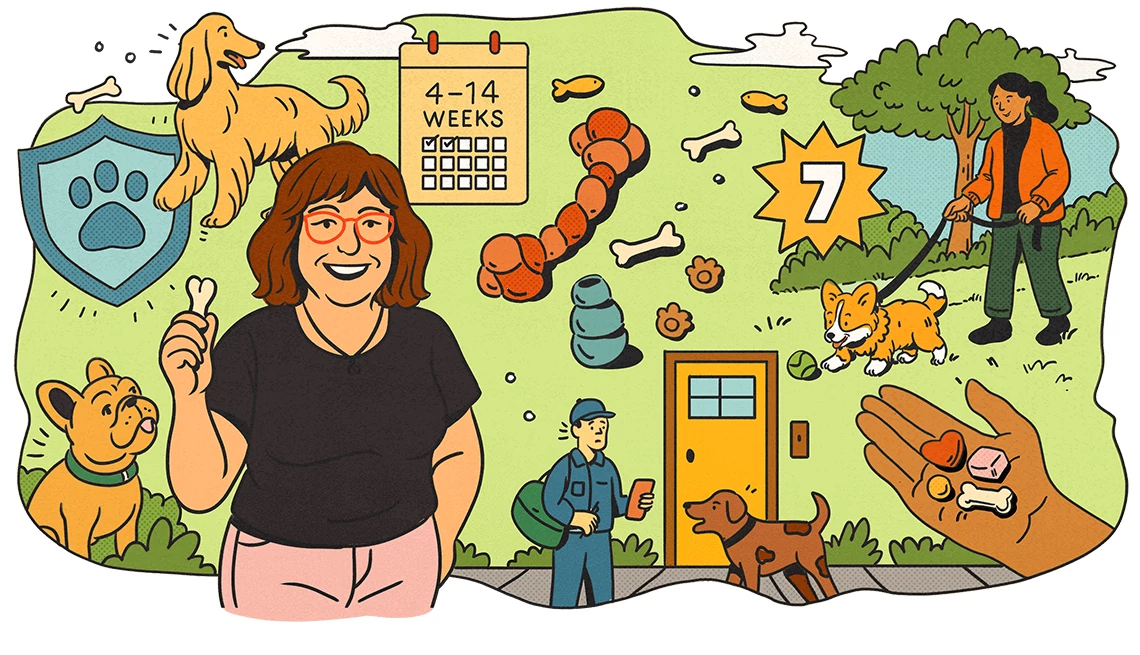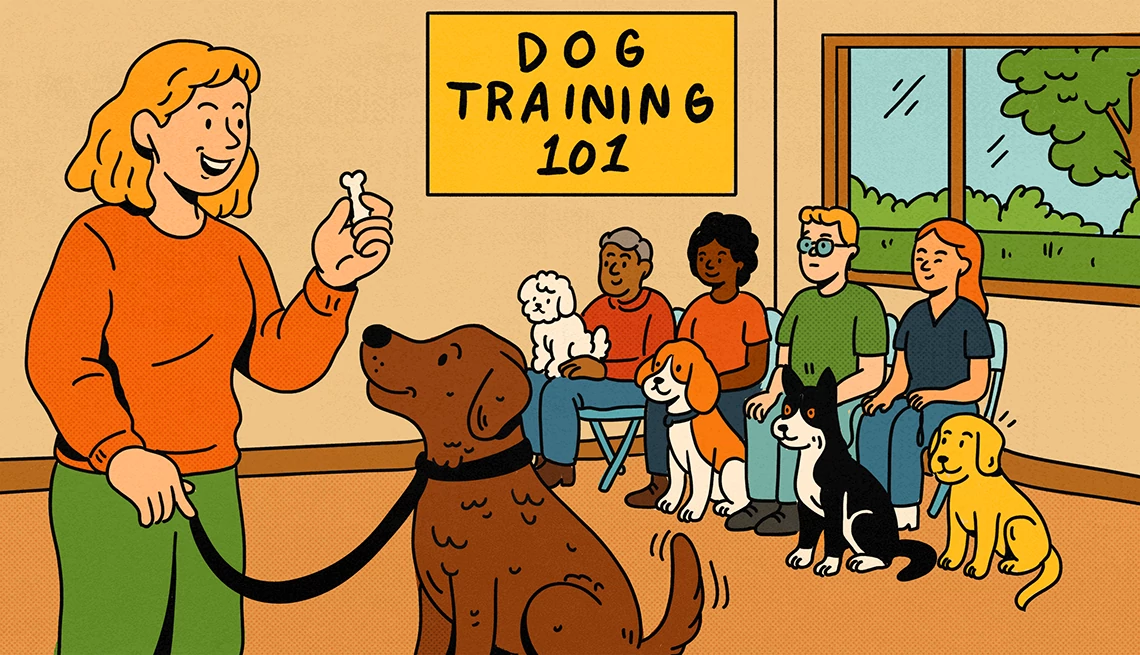AARP Hearing Center


It can be adorable when your dog jumps all over you when you walk in the door. But for older adults it can get downright dangerous: bad knees, balance issues, osteoporosis, to name a few reasons. So how do you make sure your furry best friend is well trained? A quick look at social media will give you a deluge of advice, and much of it contradicts.
What really works, then?
Terri Bright is an expert in animal behavior, a dog trainer and the director of behavior services for the Massachusetts Society for the Prevention of Cruelty to Animals Angell Animal Medical Center in Boston. She’s a dog owner, too. We asked Bright for her insider tips for training your pup, and she delivered.
Here, in her own words, is what you need to know.
There is no such thing as a bad dog
Your dog is an animal and doesn’t have any moral sense of right and wrong. Its behavior is controlled by behaviors that it both inherited and learned after it was born.
The good news: There are lots of behaviors you can shape that are new and that you want.
Got a puppy? Follow a gentler version of the Rule of 7
For years, training a puppy was all about the “Rule of 7”: Expose the puppy to seven different people, take them to seven different locations, let them walk on seven different surfaces, play with seven different toys, etcetera.
And the idea behind the rule is correct. There’s a sensitive period of socialization in puppies from weeks 4 to 14 when it’s important to expose them to different types of people and other stimuli.
But the latest research shows you shouldn’t force the interaction. Every puppy’s ability to tolerate novel stimuli is different. If you start dragging a fearful puppy to Home Depot, you can actually make them fear that stimulus in the future.
So go ahead and expose your puppy to other dogs, tall people, short people, children, sounds — but make sure they can move away or escape if they’re scared. That will help them build tolerance.
Think of your rescue dog as an onion — you need to peel back layers
It takes six months to a year to find out who a rescue dog really is. They kind of unpeel and show you what they’re afraid of, what they love, what they hate. Perhaps they barked at the mail carrier when they were a year old, and then they didn’t for a while because they moved and there was no mail carrier coming to the house. But now they’re 6 and a mail carrier comes to the house. The dog’s going to bark. A behavior that’s learned can stay in the repertoire, but the approach is to teach alternative behaviors that eventually overcome that unwanted behavior. A lot of people see behavior as something that can be cured, but trained behaviorists recognize that once a behavior is learned it can always appear in the future.
If your rescue dog is neutral about or seems to enjoy other dogs, get that dog into a class to encourage those behaviors. If your dog is afraid of other dogs or barks at them, then see a behaviorist to learn what’s underlying and what will help them most.
Skip the drop-off training classes


Do not use a boarding or training facility that requires you to drop off your dog. Such facilities are stressful for the dog, are likely to use aversive training methods, and only teach the dog within that particular environment. And don’t fall for the pack-mentality trainers. That type of training is based on faulty science.
But do try a class. A classroom setting has two advantages. If your dog can learn in that setting, then it’s cheaper than a private trainer. And they’re learning to work for you where there are controlled distractions. So they will probably think, “Hey, there are five other dogs here, but I’m getting cookies from you.” So that’s a good learning environment.
That said, group settings aren’t for all dogs. Some get too easily distracted by other dogs or have other issues. If by the end of the second class the dog hasn’t settled down, started taking treats and listening to you, then get a private consult with a behaviorist. In a consultation, a qualified behaviorist assesses why a problem behavior is happening — such as fear or anxiety, reactivity, aggression — and makes recommendations for changing those behaviors for your specific pup.




































































You Might Also Like
AARP’s Smart Guide to Pet Travel
Proper planning makes travel easier for your pet — and you
AARP Smart Guide to Pet Adoption
33 tips for finding a new furry best friend after 50
Pet Safety Tips for a Fun Summer
Keep your cat or dog healthy and happy when the temperature starts to rise